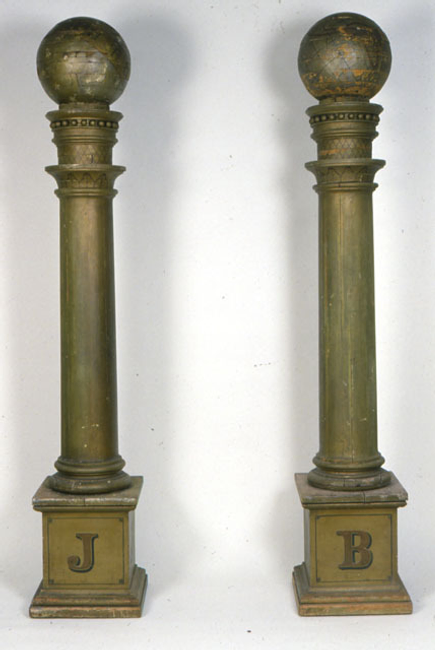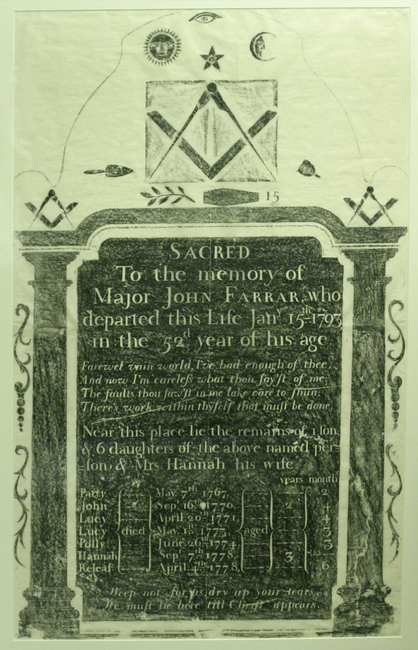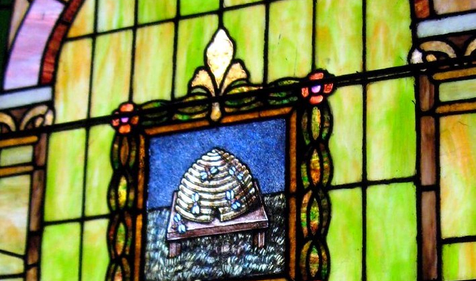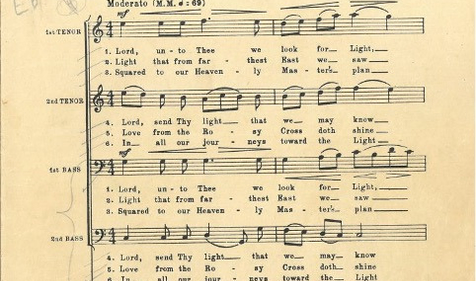Columns are a prominent Masonic symbol of stability and wisdom. They embody the balance between opposite forces, such as light and darkness or strength and beauty.
The many teachings of Freemasonry seek to encourage our Brothers to live virtuous lives, uphold principles of honesty, integrity, and charity, and strive to become better individuals. Central to these teachings are symbols, often drawn from nature (such as the acacia tree), stonemasonry (the square and compasses), and religious texts.
While Freemasonry is not a religious organization, it often incorporates spiritual elements into its rituals and teachings. One being the two columns, known as Boaz and Jachin, that are famously seen in King Solomon’s Temple on the porch guarding the entrance. These columns are integral symbols within Masonic rituals, and depictions of them, both visually as images or physically as structures, adorn many lodge rooms today.

Freemasons are hardly the first people to integrate this symbol into its teachings. Columns have been used as symbols in various cultures and religions throughout history, and their specific meaning can vary depending on the cultural, religious, or organizational context in which they are used. A look at how columns have been represented and built since the early days of civilization helps convey this ancient emblem's weight and significance.
Columns of the Ancient World
Freestanding columns have served as support structures and monuments for thousands of years. Many cultures around the world, from the Assyrian to the Mesoamerican, raised obelisks, structures characterized by a four-sided square base that tapers into a pointed top. While the earliest ones no longer exist, ancient Egyptians built these structures as early as 2300 BCE.
The obelisk initially symbolized rebirth and was used as funerary monuments. Over time, they became principally linked with Ra, God of the sun and father of all Egyptian deities. Beginning around 1570 BCE, obelisks were always raised in twos to keep with the culture's values of balance and harmony. They were often erected outside a temple in honor of the gods or to honor the achievements of a great king or pharaoh.
Religious Columns
Religions from all corners of the earth have used columns to symbolize core teachings. In India, the dharmachakra, or wheel of dharma, is a widespread symbol used in religions, including Hinduism, Jainism, and Buddhism. The earliest Indian monument featuring dharmachakras is the Ashokan Pillars, such as the lion pillar at Sanchi. In Hinduism, the concept of "Dharma" is often represented as a pillar symbolizing the moral and ethical order of the universe.

Columns are also commonly referenced in Western religions. Like many Masonic symbols, the twin columns described in ritual today are derived from ancient Hebrew and Biblical allegories. In the first book of Antiquities of the Jews by the Jewish historian Flavius Josephus, he explains how Enoch, the grandson of Adam, used two columns to protect the knowledge that was found by humanity. It was foretold to Adam that the world would be destroyed twice, once by fire and once by water. Enoch placed man's knowledge in a brick column to protect from the
fire and a stone column to protect from the flood. The notion of using columns to house and protect knowledge has been woven directly into the rituals of the Craft.
Dual columns again appear later in the Book of Numbers when Moses and the Israelites passed through the wilderness. A column of clouds appeared to guide Moses and his people during the day, while a column of fire illuminated the way at night. Throughout the texts of the Abrahamic religions, columns reflected the knowledge of man as the Great Architect shared it.
Less formally, modern Christians use the term "Pillars of the Church" to describe prominent figures who supported and upheld the Christian faith, whether locally or on a larger scale.
The Columns of King Solomon's Temple
For the front of the Temple, he made two pillars, which together were thirty-five cubits long, each with a capital five cubits high. He made interwoven chains and put them on top of the pillars. He also made a hundred pomegranates and attached them to the chains. He erected the pillars in the front of the Temple, one to the south and one to the north. The one to the south he named Jakin and the one to the north Boaz. – II Chronicles 3:15-17

The tenets of Brotherly Love, Relief, and Truth guide our membership in thought and deed. King Solomon's Temple, or the First Temple as it is also known, is believed to have existed in Jerusalem between the 10th and 6th centuries BCE. Our understanding of its architecture is largely based on narratives in the Hebrew Bible, specifically the Book of Kings, which provides quite a detailed description.
Consistent with other ancient cultures that raised columns near important religious sites, the bible explains that two prominent pillars, Boaz and Jachin, were built to guard the Temple's entrance. The text of 1 Kings Chapters 6-7 illustrates how the master builder and prominent Masonic figure Hiram Abiff erected these columns:
“15 He cast two bronze pillars, each eighteen cubits high and twelve cubits in circumference. 16 He also made two capitals of cast bronze to set on the tops of the pillars; each capital was five cubits high. 17 A network of interwoven chains adorned the capitals on top of the pillars, seven for each capital. 18 He made pomegranates in two rows encircling each network to decorate the capitals on top of the pillars. He did the same for each capital. 19 The capitals on top of the pillars in the portico were in the shape of lilies, four cubits high. 20 On the capitals of both pillars, above the bowl-shaped part next to the network, were the two hundred pomegranates in rows all around. 21 He erected the pillars at the portico of the Temple. The pillar to the south he named Jakin and the one to the north Boaz. 2’2 The capitals on top were in the shape of lilies. And so, the work on the pillars was completed.
Unfortunately, the Temple was destroyed during the Siege of Jerusalem by Nebuchadnezzar II of the Neo-Babylonian Empire in 587 BCE, and no remains of the Temple, including these famous columns, have ever been found. However, historians have concluded that the First Temple existed on the Temple Mount in Jerusalem by the time of the Babylonian siege.
Columns in Freemasonry
In Freemasonry, the building of Solomon's Temple is a vital allegory from which we derive much of our symbolism. Modern Masonic lodges are designed to act as a functional representation of the Craft, with the lodge room oriented as a reflection of the Temple of King Solomon. The Temple describes the path of development we must journey through as Masons, so it is fitting then that many lodges are adorned with columns harkening back to the original Jachin and Boaz.

Using physical columns is not a requirement in modern Freemasonry, however, it is common to see twin columns represented in Masonic lodges worldwide. In England, the columns are typically placed in front of the Worshipful Master's chair. In contrast, in American lodges, the two columns are often placed in the northwest corners near the candidate's preparation room. Other lodges may place them in the south by the Master's chair.
Finally, most people recognize columns as symbols of strength and stability, representing the idea of a solid foundation and support. As Freemasons, we must strive to support each other and our communities. Through our work and by living our values, we can become reliable pillars, or columns, that lift those around us. Like many symbols crucial to our Masonic teachings, the column's deep history and profound significance are inspirational.
As we reflect on the historical importance of columns, let us strive to live by our core values as Freemasons and be the pillars upon which our Brotherhood continues to build.
Related Stories
Discover additional Scottish Rite blogs and news on this topic.
-
A Jolly Masonic Mug
History
Read More about A Jolly Masonic Mug
-
What Does the Beehive Mean in Freemasonry?
Degrees
Read More about What Does the Beehive Mean in Freemasonry?
-
Official (and Unofficial) Music for the 32nd Degree
History
Read More about Official (and Unofficial) Music for the 32nd Degree



